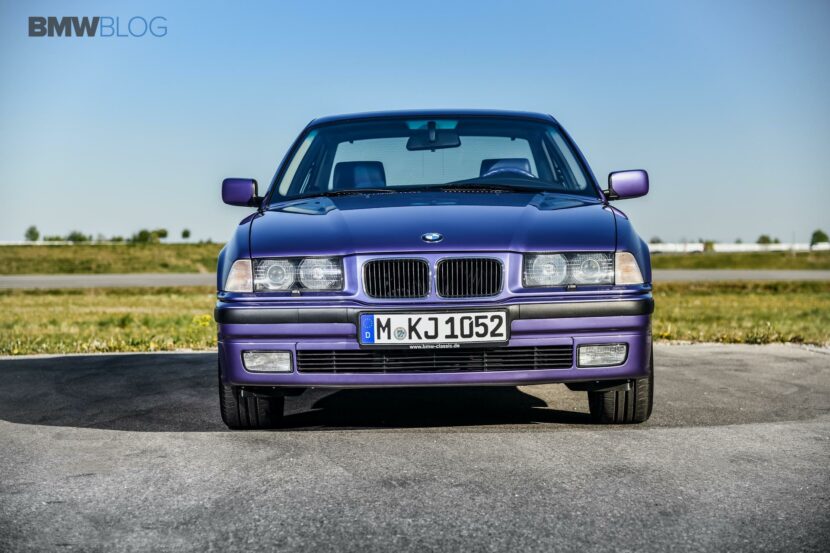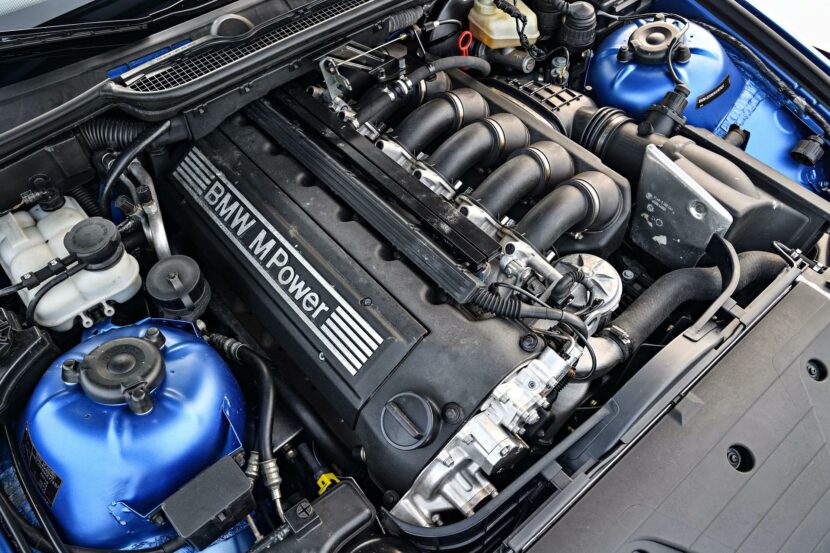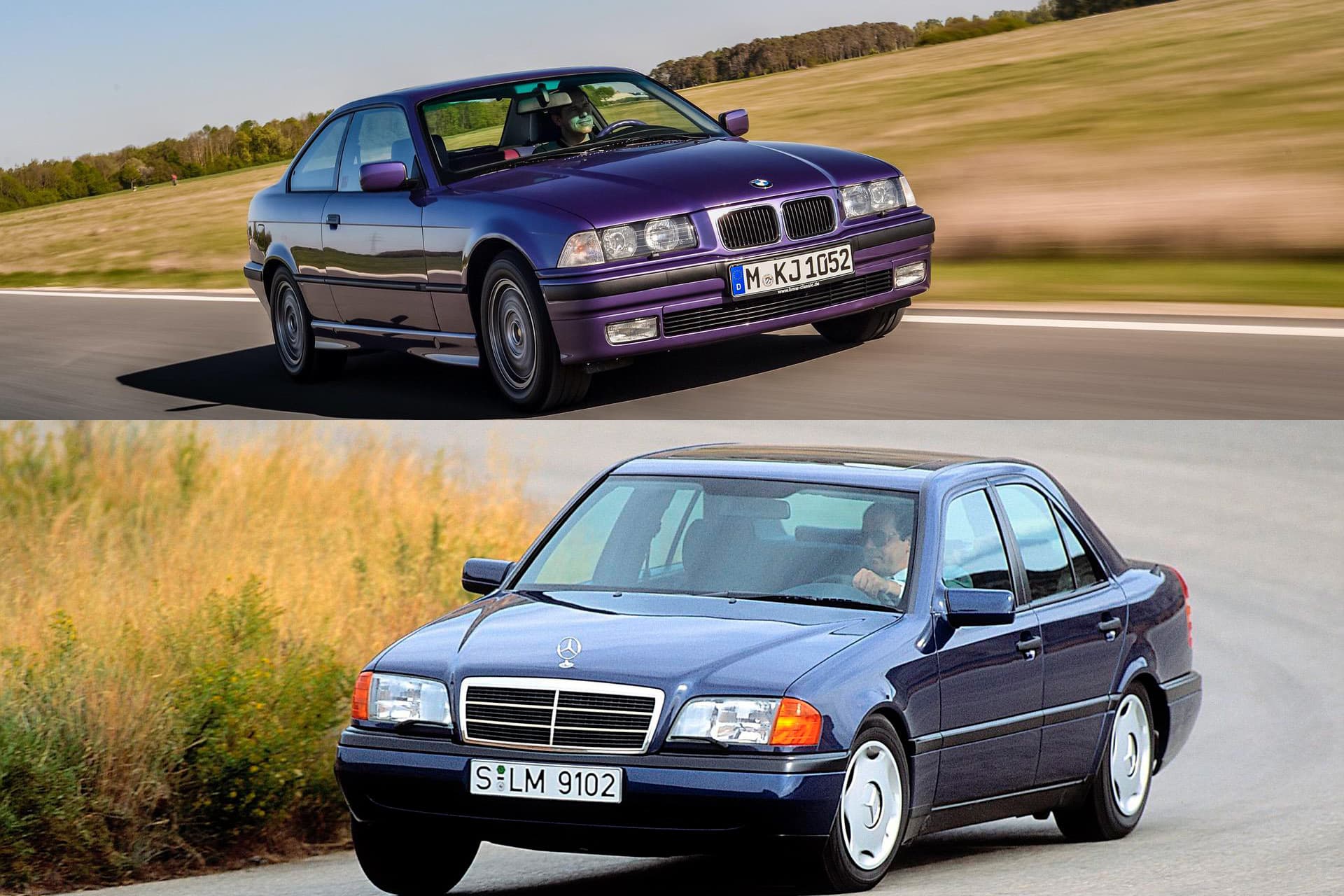The automotive industry is so cluttered. Today, if you want an imported badge and an exceptional driving experience, there are literally dozens of choices from almost as many automotive marquees offering generally similar promises. Looking for that in the early 90s was considerably easier – BMW and Mercedes were the top dogs, with a growing interest in the still-unproven (but ironically reliable) Lexus, and small numbers of former VW drivers that wandered, lost, into an Audi dealership. Not strangers to this segment, both BMW and Mercedes offered up substantial value in their entry level autos – BMW with the classic E36 3 Series, and Mercedes with the W202 C Class. And while similar, today we’ll take a look at what makes both of them uniquely iconic.
In the Beginning…

The E36 debuted in 1992, and Mercedes brought the W202 out hot on its heels in 1994. Both promised improved aerodynamics, more ergonomic interiors, and better performance than their outgoing models, because if they didn’t, nobody would buy the new one. That said, they mostly delivered, according to of-era automotive journalist impressions. Both offered base level four-cylinder cars, and both eventually offered high performance variants as well – BMW’s M division cooking up the second generation M3, and Mercedes breaking bread with race car crew AMG to transform base C280s into the C43 and C36 AMG models.
Neither automaker cheaped out, either – both the M3 and the AMG cars received tons of unique parts. Upgraded brakes, suspension, wheels, aero, and cosmetics helped set the race car versions miles apart from their entry-level brethren – both aesthetically, and on the racetrack.

Mercedes-Benz C-Class Saloon of the 202 model series (production period 1993 to 2000). Driving shot from front left. (Photo signature in the Mercedes-Benz Classic archives: A92F2052)
But let’s start with the basics – BMW’s 318i and Mercedes’ C220 (later replaced by the C230). Both received an inline four-cylinder engine good for sub-200 hp: around 150 in the Merc, and 115 in the BMW. Thankfully, BMW later increased the output closer to a marginally less pathetic 140 hp in 1996, and increased displacement from 1.8 to 1.9 liters. The E36 got a manual shifter standard, and an accompanying optional automatic.
Supposedly Mercedes offered an optional manual on the W202 in the US, but I couldn’t find any credible sources confirming that. It seems that since the auto came standard, most people didn’t even know they could get a manual C220 or 230. This resulted in near-zero take rates for manual W202s, and certainly explains why they’re so hard to find today. Both could theoretically outrun a Prius in a drag race, achieving zero to sixty in around 9 seconds, and conjuring up a quarter mile time in a “mere” 17 seconds. Not bad for the era, and it only gets better from here – I promise.
Warmer…

Moving up the model chain, the production cycles of these two Teutonic titans reveals more similarities. Both the W202 and the E36 got an inline six-cylinder version, with bigger chrome numbers on the back so your neighbor knew you didn’t buy the base model. For the Benz, the 190 hp C280, and BMW introduced the 325i with a suspiciously similar 189 hp. Later updates would push the C280 up to a 204 hp V6, and BMW would release the 328i, pushing displacement up and only offering 1 additional hp, but a rather stout 207 lb-ft of torque.
The 328i allowed the E36 to became fairly quick: 0-60 was over in 6.4 seconds and the quarter mile was completed in 15 seconds flat. The C280 was quicker too but couldn’t touch the 328i – taking about a second longer in both the 0-60 sprint and the quarter mile. We’re getting a little warmer.
Red Hot

Mercedes-Benz C 43 AMG Saloon of the 202 model series with 225 kW (306 hp) output (production period 1997 to 2000). Driving shot from rear left. (Photo signature in the Mercedes-Benz Classic archives: A97F3561)
Finally, we reach the top of the food chain: the C43 AMG and the E36 M3. As some of the earliest representatives of both M and AMG in the United States, these both were undeniably important cars for their respective brands. All C Class AMGs started life as a regular C280 – Mercedes had to physically ship the car to AMG, where it was reworked from the ground up. In fact, thanks to the hand-crafted AMG-modified 4.3 liter V8 under the C43’s hood, it was actually the second quickest Mercedes in the 1990s lineup; trailing only the massive, V12-powered SL600.

But in order for the C43 to exist, the C36 had to make it market first. And compete it did – using a tuned 3.6 liter inline-six good for 276 hp and 284 lb-ft of torque and an upgraded four-speed automatic transmission from the premium E420. On top of that, the AMG car received brakes from the V12 S600, a redesigned differential, faster steering, 17” wheels, substantial suspension tweaks, and the list goes on – basically, anything that could be upgraded or improved on for performance, was.
And although Mercedes and AMG could’ve stopped there and probably disappointed no one – they didn’t. It later became the C43, which got all of the wonderful additions that the C36 already had but ditched the six-cylinder for a V8. Good for 306 hp and 302 lb-ft, and now utilizing a five-speed automatic, more hardware courtesy of the S Class parts bin. Despite the massive power, most reviews place the C43’s 0-60 time in the six second area, with quarter mile times in the high 14s. Which isn’t disappointing, until you check out the competition.
The Competition

The E36 M3 was a formidable rival. Despite receiving a neutered version of the S50 in the Americas – losing around 80 hp and the individual throttle bodies powering the European version of the car – its accolades are the stuff of legends. Car and Driver named it “the best handling car at any price point” in September 1997, beating out pricy competitors like Porsche and Ferrari. Equally complimentary, Michelin’s factory drove one on track for 50,000 miles and 22 years, using it to perfect its tire technology.
And of course, Paul Walker famously owned quite a few of them.
With US-spec cars making do with just 240 hp and 225 lb-ft of torque (and later 236 lb-ft, when the S50 was replaced with the larger displacement S52), it’s astounding that it still beat the AMGs handily in straight line speed – a 5.5 second 0-60 time and a quarter mile in 14 seconds flat. Much of this is due to the 200-pound difference between the cars, as well as the 5-speed manual only available in the M3.
And while the C43 certainly performed well, the E36 was (and some would say continues to be) a driving enthusiast’s benchmark.
So, Where are They Now?

Mercedes-Benz C 36 AMG from model series 202, production period 1993 to 1997. Exterior, driving shot from rear left. Photo from 1993.
Well, less than 1500 C43 AMGs ever made it to North America, and around a thousand C36s. Since it isn’t always the easiest car to find, it must be worth a fortune, right? Well, not really. Great examples trade between $20-25k, and rarely much more than that. Conversely, there is no sudden danger of an E36 M3 shortage, with around 33,000 sold in North America. Despite being far more common, auction prices seem to indicate that nice versions will set you back around the same $20k, excluding rare color or exceptionally low-mile cars (or of course the exceptionally uncommon M3 Lightweight).
With E9X M3’s shooting up in value rapidly, it seems like the E36 M3 may be destined to sit at the same price point indefinitely – which is great news for drivers and collectors. Lower trim E36s and W202s also seem to have traveled together to the bottom of the depreciation curve – ranging from $2500 for a craigslist basket case to $10k for excellently preserved examples.
Despite the differences in packaging, the E36 and W202 ended up in pretty much the same place. Entry models offered exceptional luxury and performance in the 1990s. Nearly 30 years later, and they’ve found themselves at the same place in a different time – cheaper trims offering an affordable entrance into driving enthusiasm, and higher trims representing benchmark driving experiences that won’t break the bank. You can’t go wrong with either model – as a sub $10k intro to driving enjoyment, both chassis do it well.
But I think you and I both know that you’re going to get a little bit more bang for your buck in an E36.





































































